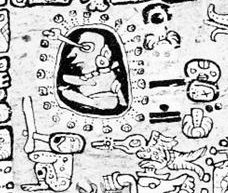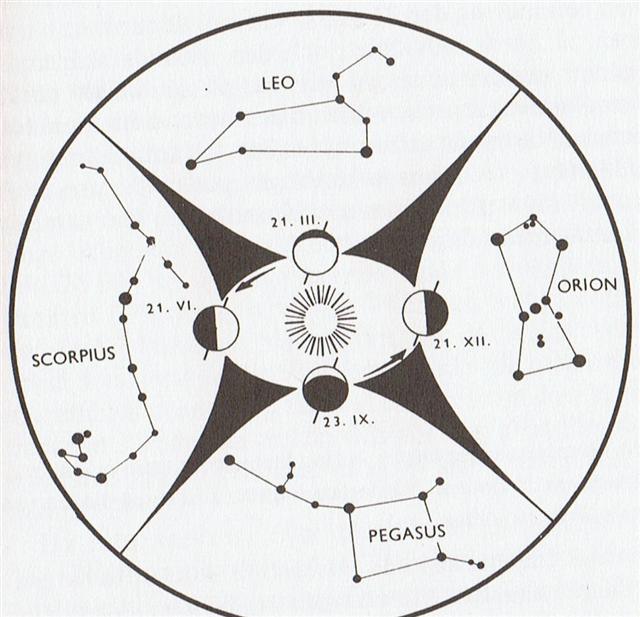Aristarchos from Samos (which island was the birth place also for the famous Pythagoras) deduced it was not the Sun which moved around the Earth but the other way around - it was the Earth ('the little clod of earth') which moved around the great Sun ('fire') in the sky. His discovery is the first we know of but certainly the same conclusion could have been drawn earlier by anyone interested enough to make notes and to count. The practice of turning down the fingers, contrary to our practice, deserves notice, as perhaps explaining why sometimes savages are reported to be unable to count above four. The European holds up one finger, which he counts, the native counts those that are down and says 'four'. Two fingers held up, the native counting those that are down, calls 'three'; and so on until the white man, holding up five fingers, gives the native none turned down to count. The native is nunplussed, and the enquirer reports that savages can not count above four. (Dr. Codrington in Melanesian Languages, p. 222, note 1, as related in William Churchill's The Polynesian Wanderings.) And even the casual observer would have noticed that the Full Moon did not stand still at some special star but moved ahead during the year in an orderly fashion. It would therefore have been easy to determine the approximate time of the year by looking at the face of the Moon and see where she was. If the Moon was not full, then a quick mental reflection would be enough to find out where the next Full Moon ought to come among the fixed stars.
For instance was it easy to remember that the Lion constellation (Leo) would be high in the night sky when the Sun was at the opposite side of the sky - e.g. at the time around the northern spring equinox in March 21:
But for someone living south of the equator, as on Easter Island, the seasons of the year were opposite to those north of the equator. So when Leo was visible in the nights of March it was around autumn equinox. The position of the Full Moon advanced over the year approximately along a path marked out by our well known zodiac:
However, when the Sun in June (VI) was rising at the horizon in the east in the place where Taurus (the Bull constellation) should have been visible - had not the rays from the sun made such observations impossible - the Full Moon could be found in the Scorpion at the opposite side of the sky. The positions of the Sun could be determined from the positions of the Full Moon (i.e. by using the Hindu nakshatra method). Like the sun, chiefs of the highest tabus - those who are called 'gods', 'fire', 'heat', and 'raging blazes' - cannot be gazed directly upon without injury. The lowly commoner prostrates before them face to the ground, the position assumed by victims on the platforms of human sacrifice. Such a one is called makawela, 'burnt eyes'. (Marshall Sahlins, Islands of History.) |


